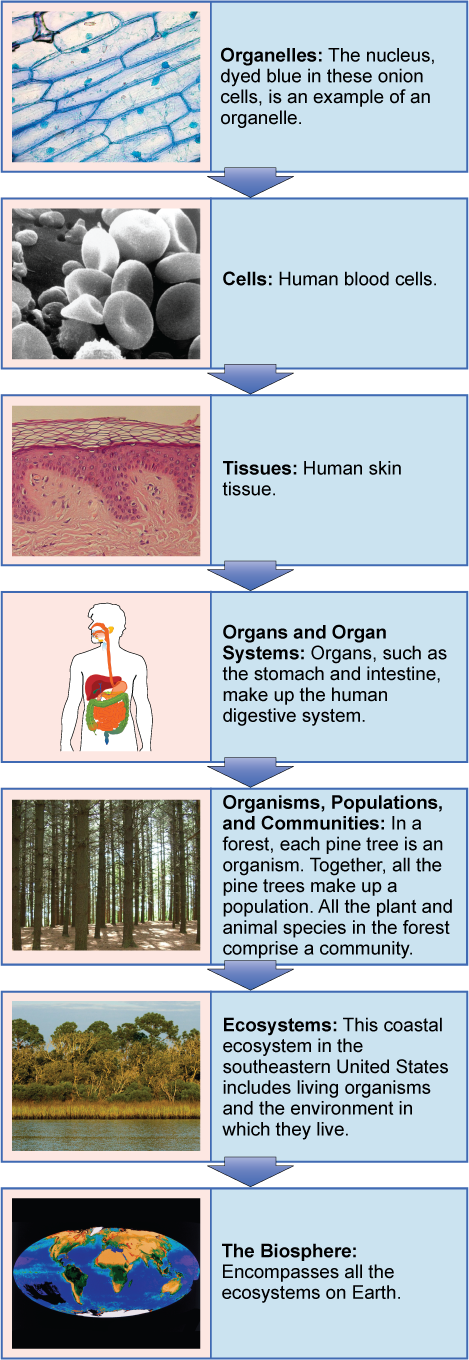| << Chapter < Page | Chapter >> Page > |
All the individuals of a species living within a specific area are collectively called a population . For example, a forest may include many pine trees. All of these pine trees represent the population of pine trees in this forest. Different populations may live in the same specific area. For example, the forest with the pine trees includes populations of flowering plants and also insects and microbial populations. A community is the sum of populations inhabiting a particular area. For instance, all of the trees, flowers, insects, and other populations in a forest form the forest’s community. The forest itself is an ecosystem. An ecosystem consists of all the living things in a particular area together with the abiotic, non-living parts of that environment such as nitrogen in the soil or rain water. At the highest level of organization ( [link] ), the biosphere is the collection of all ecosystems, and it represents the zones of life on earth. It includes land, water, and even the atmosphere to a certain extent.

Which of the following statements is false?
The fact that biology, as a science, has such a broad scope has to do with the tremendous diversity of life on earth. The source of this diversity is evolution , the process of gradual change during which new species arise from older species. Evolutionary biologists study the evolution of living things in everything from the microscopic world to ecosystems.
The evolution of various life forms on Earth can be summarized in a phylogenetic tree ( [link] ). A phylogenetic tree is a diagram showing the evolutionary relationships among biological species based on similarities and differences in genetic or physical traits or both. A phylogenetic tree is composed of nodes and branches. The internal nodes represent ancestors and are points in evolution when, based on scientific evidence, an ancestor is thought to have diverged to form two new species. The length of each branch is proportional to the time elapsed since the split.


Notification Switch
Would you like to follow the 'Biology' conversation and receive update notifications?